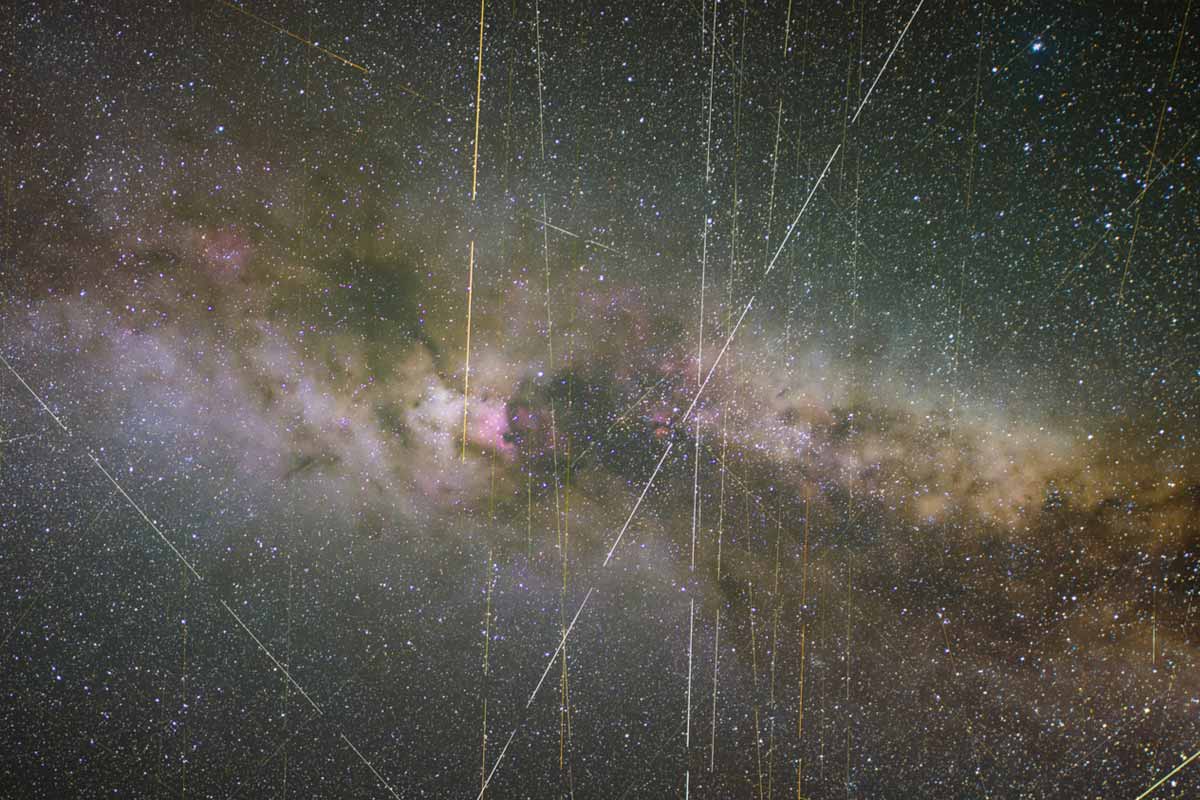A quiet night sky should sound like velvet, yet new measurements say otherwise. Across 76 million radio images, subtle traces creep into bands meant to stay silent. Behind the hints sits Starlink. Its low-orbit footprint now brushes sensitive observations as scientists map, compare, and verify what those intrusions actually do. What emerges challenges assumptions, sharpens methods, and asks how connectivity and discovery can coexist. The stakes touch both science and daily connection.
Radio astronomy’s quiet zones and why they matter
Radio telescopes listen where nature whispers, so protected bands guard faint signals. Observatories choose remote deserts for quiet, while calibration trims remaining buzz. When emissions leak into these windows, researchers risk mistaking artifacts for astrophysics. That bends results, wastes observing time, and warps pipelines built to trust stable, silent bands.
The Square Kilometre Array’s prototype station pursues tomorrow’s sensitivity today, so engineers push thresholds lower. Cascades of images feed checks, and algorithms flag spikes while teams compare timings. Silent bands must stay silent. Baselines, beam shapes, and sky maps depend on clean spectra that truly support repeatable measurements and trust.
This survey combed an ocean of observations to test that promise under real conditions. Investigators mapped interference, then traced patterns against satellite paths to quantify exposure. As coverage grows, Starlink passes near many fields. Observatories plan mitigations, schedule strategically, and reinforce shielding around receivers carefully without losing time or bandwidth.
How Starlink emissions reach supposed no-signal bands
Curtin University analysts tallied over 112,000 emissions linked to 1,806 satellites across the survey. Signals appeared even at 150.8 MHz, a protected band for radio astronomy where silence should hold. In some datasets, interference touched up to thirty percent of images, complicating measurements and raising flags for downstream science outputs.
Researchers separated intentional beacons from stray hardware noise by matching timings and geometry. Profiles drift because leakage is unplanned, and models fail, so filters miss signatures. Pipelines trained on stable patterns then struggle badly. Evolving electronics, thermal states, and power modes reshape emissions in ways that evade rejection during reduction.
The team reports constructive talks with SpaceX, noting the operator is not breaking rules. Steven Tingay says regulations center on deliberate transmissions, so unintended leakage sits outside coverage. Dylan Grigg points to onboard electronics as likely sources, which complicates prediction and filtering. This invites engineering fixes and coordinated tests now.
What interference does to results, instruments, and science goals
Unwanted carriers raise noise floors, so sensitivity drops and exposures must stretch, which costs nights. Burst searches grow uncertain, because pipelines confuse bright streaks for transients and trigger false positives. Spectral studies risk bias as narrow leaks mimic features hinting at distant gas, early galaxies, or delicate processes researchers track.
Teams therefore tag frames, remove segments, and reweight frequencies while validating metrics. Those steps protect catalogs and reduce the chance that oddities pass peer review. Dynamic masks follow passes while machine learning scores probability reliably, because Starlink moves quickly. Analysts rescue data without embracing false positives that haunt time-domain searches.
Mitigation blends hardware shielding with smarter software, since beamforming can null moving sources while adaptive filters track them. Dynamic scheduling helps as arrays steer toward cleaner zones when passes line up. Data lineage stays crucial, because auditors need proofs that flags, thresholds, and detectors behaved as intended throughout the campaign.
Policy gaps and operator pathways with Starlink at scale
International Telecommunication Union processes shield astronomy by limiting transmissions in key bands. Frameworks focus on intentional signals, so leakage escapes despite rising global traffic. Clarifying standards for unintended emissions would close a loophole and align certification with practice. They reward electromagnetic compatibility from layout through grounding, shielding, and disciplined clocks.
Numbers frame urgency: more than 7,000 satellites orbited during the survey, and launches continue. Interference reached up to thirty percent of images in some sets, which scales as orbits fill. Updating guidance invites measurable tests with chambers, on-orbit telemetry, and rigorous audits that link duty cycles with documented sky impact.
Operators can help by publishing spectra, versioning hardware, and sharing change logs for emissions profiles. Design tweaks cut leakage when grounding, shielding, and clocking improve, while software pauses subsystems near protected bands. Shared dashboards let observatories plan nights confidently, since pass forecasts tie to reliable radio behavior verified by measurements.
Beyond one fleet, how practices generalize across low-Earth orbit systems
The survey focused on a dominant fleet for scale, yet other constellations share architectures that may leak under certain modes. Cross-industry baselines therefore matter, because small fixes propagate widely with benefit. Stress testing edge cases lifts reliability, and lessons learned transfer across vendors, instruments, and orbits as space traffic grows.
Astronomy adapts, so arrays now fuse metadata with sky models to separate motion from nature. When teams coordinate, mitigation costs drop, and science steadily keeps pace as space grows busy. Practices proven with Starlink translate, since operators share parts and methods, so improvements scale across fleets and keep bands clean.
Practical steps start now: publish interference maps, expand testbeds, and include astronomers in design reviews. Track key rates, like flagged frames per hour, across seasons and hardware versions consistently, carefully. Such practical habits build evidence that guides policy, encourages better designs, and keeps protected radio bands quiet for deep surveys.
What changes next decides how we share the silent sky together
Astronomy and industry can move together, because evidence points to fixes that preserve access. Shared standards will tame leakage while satellites serve communities on the ground, and observatories keep science moving. With transparent data, dialogue, and steady engineering, Starlink and its peers can leave the cosmos quiet enough for discovery. They can do this without dimming ambition, slowing connectivity, or clouding trust in results. That choice belongs to everyone who benefits from the sky.
